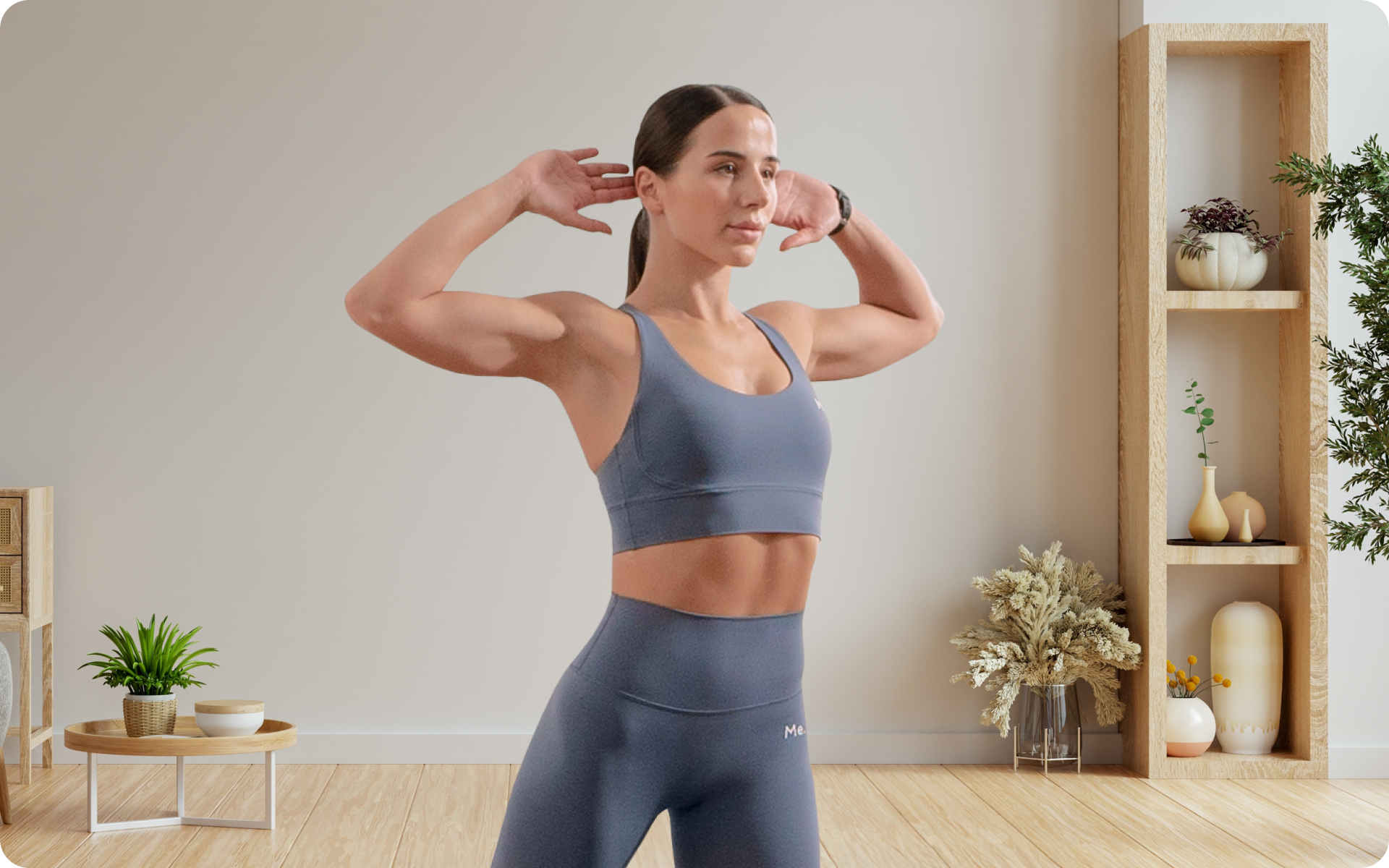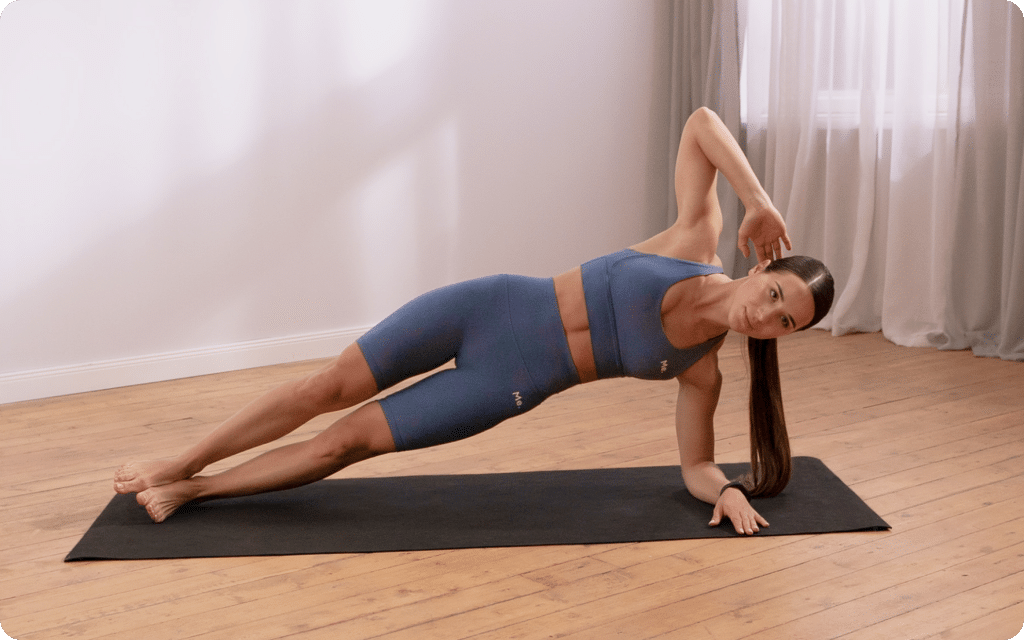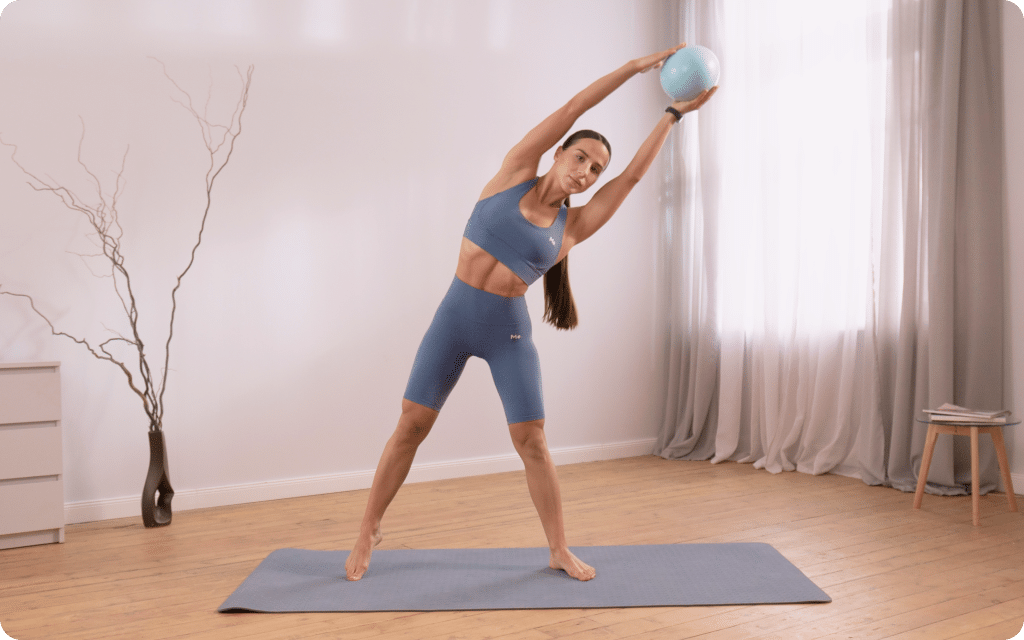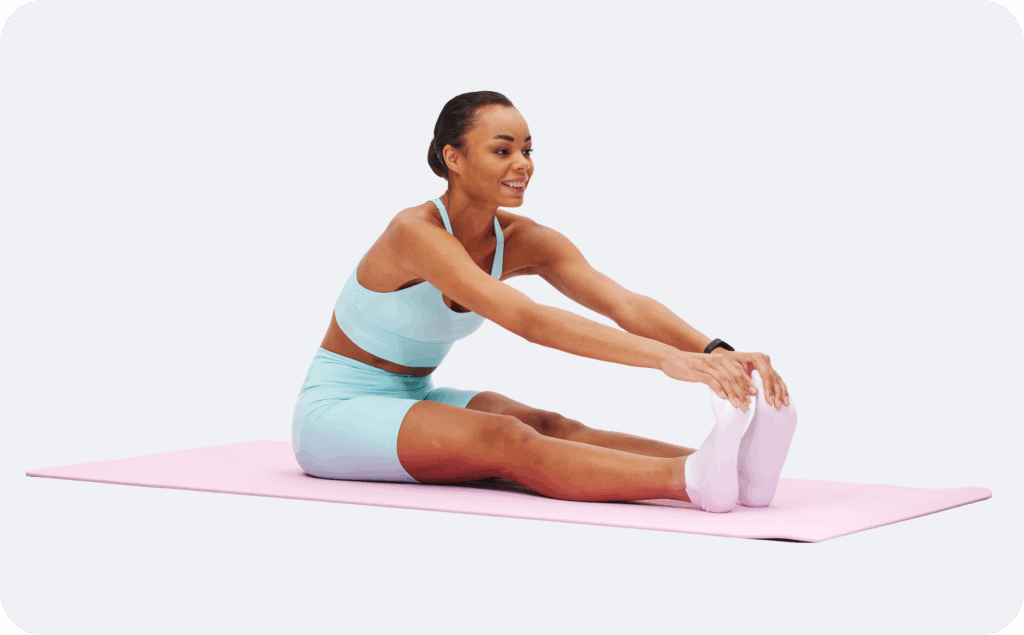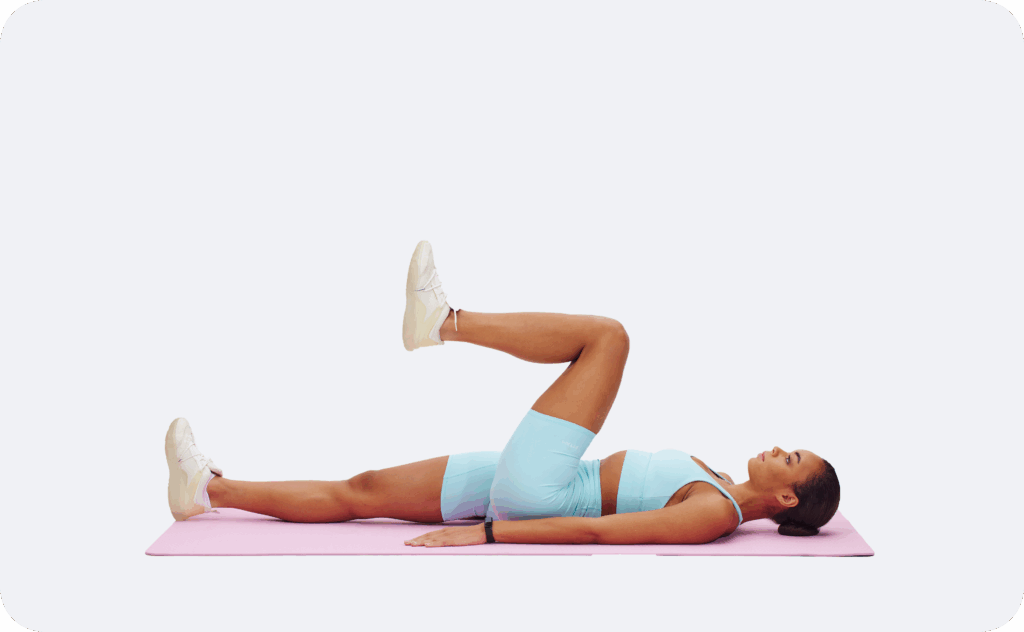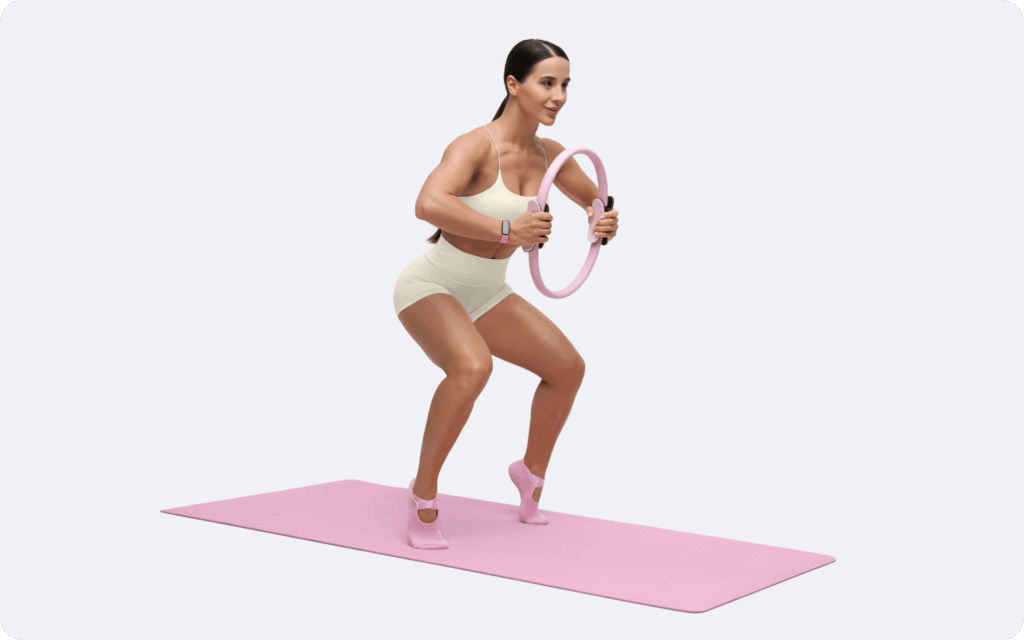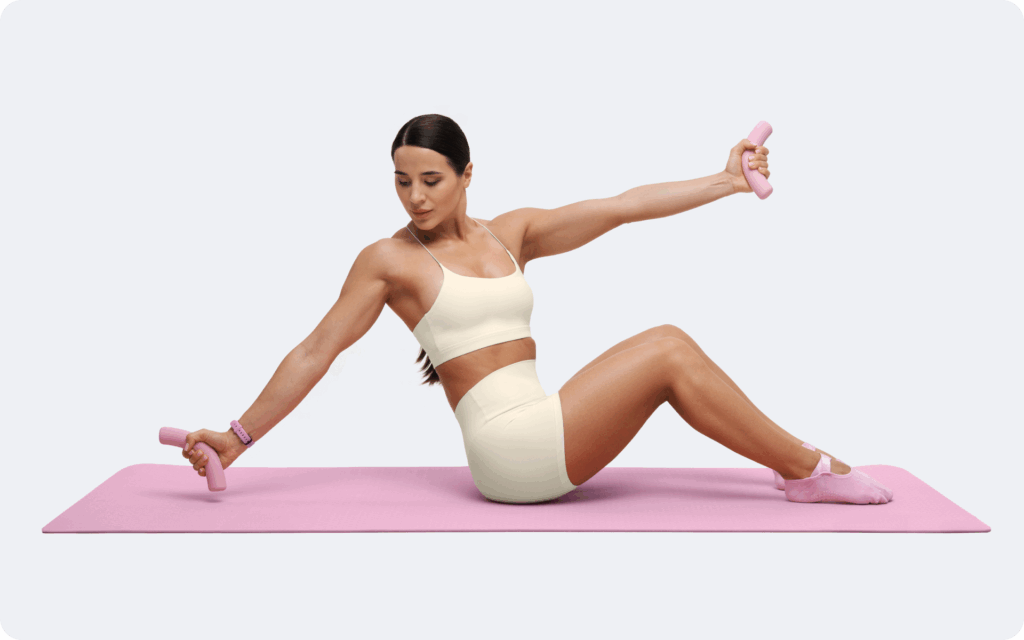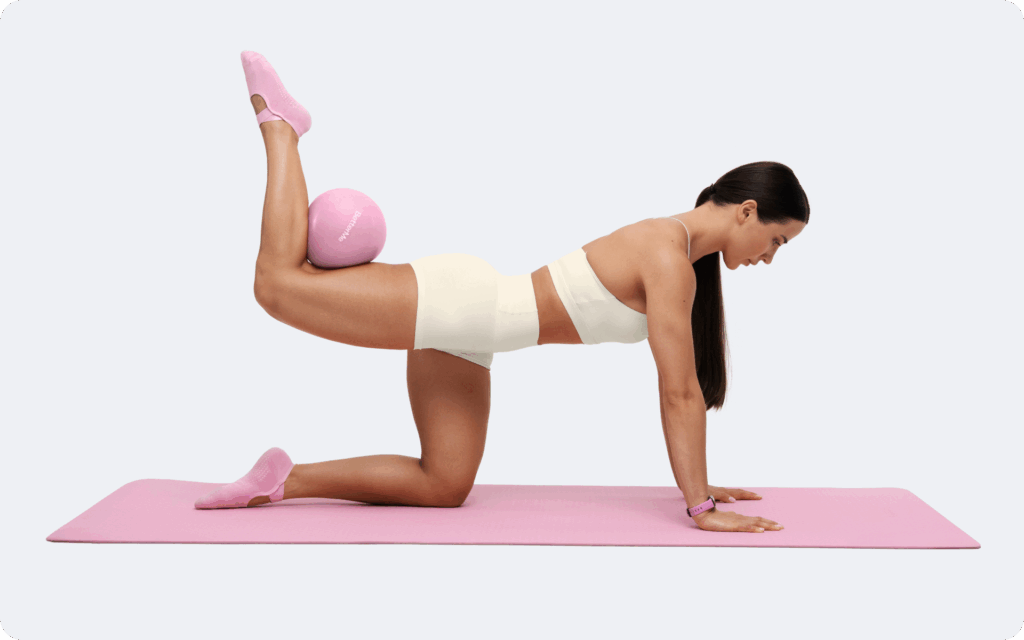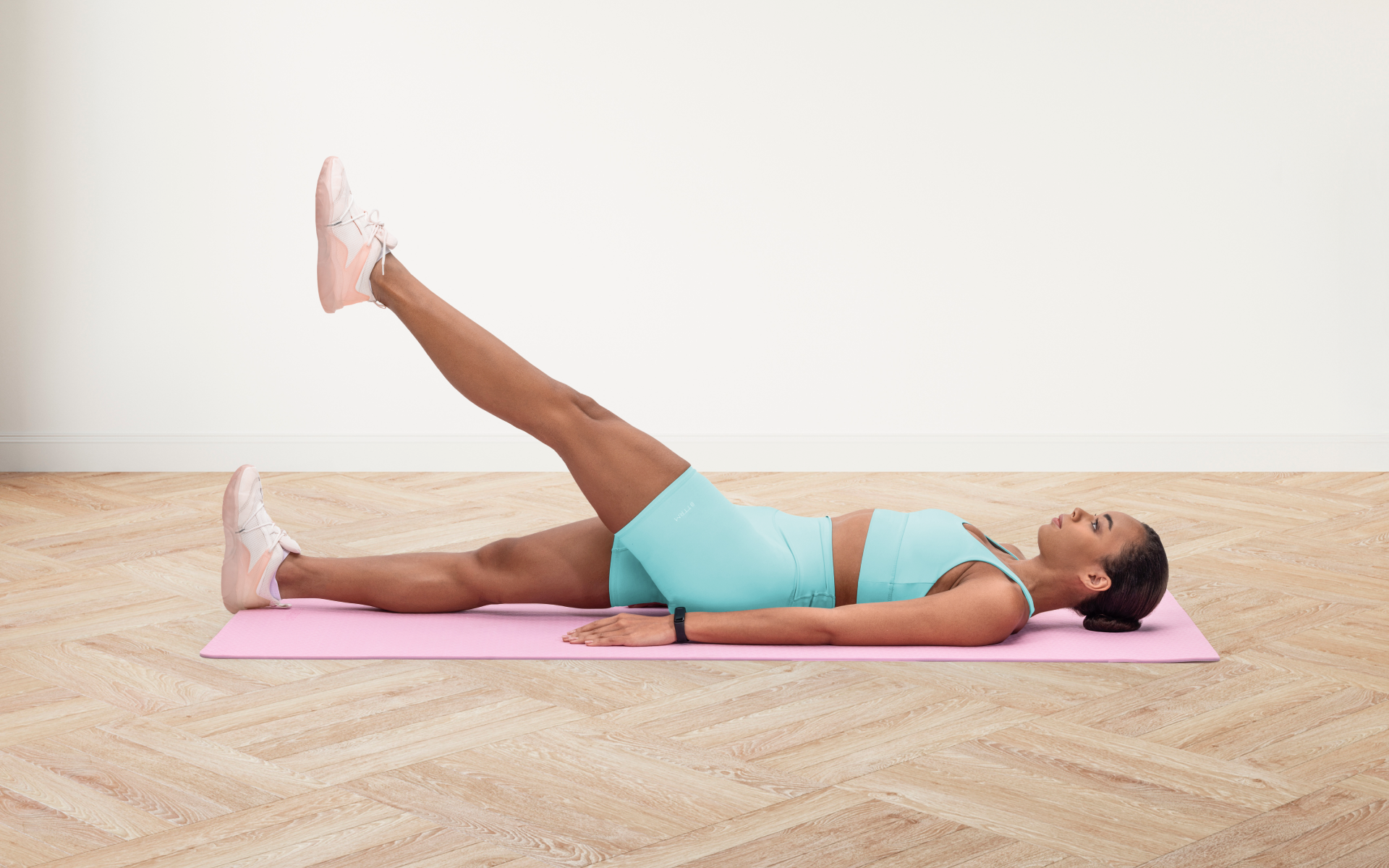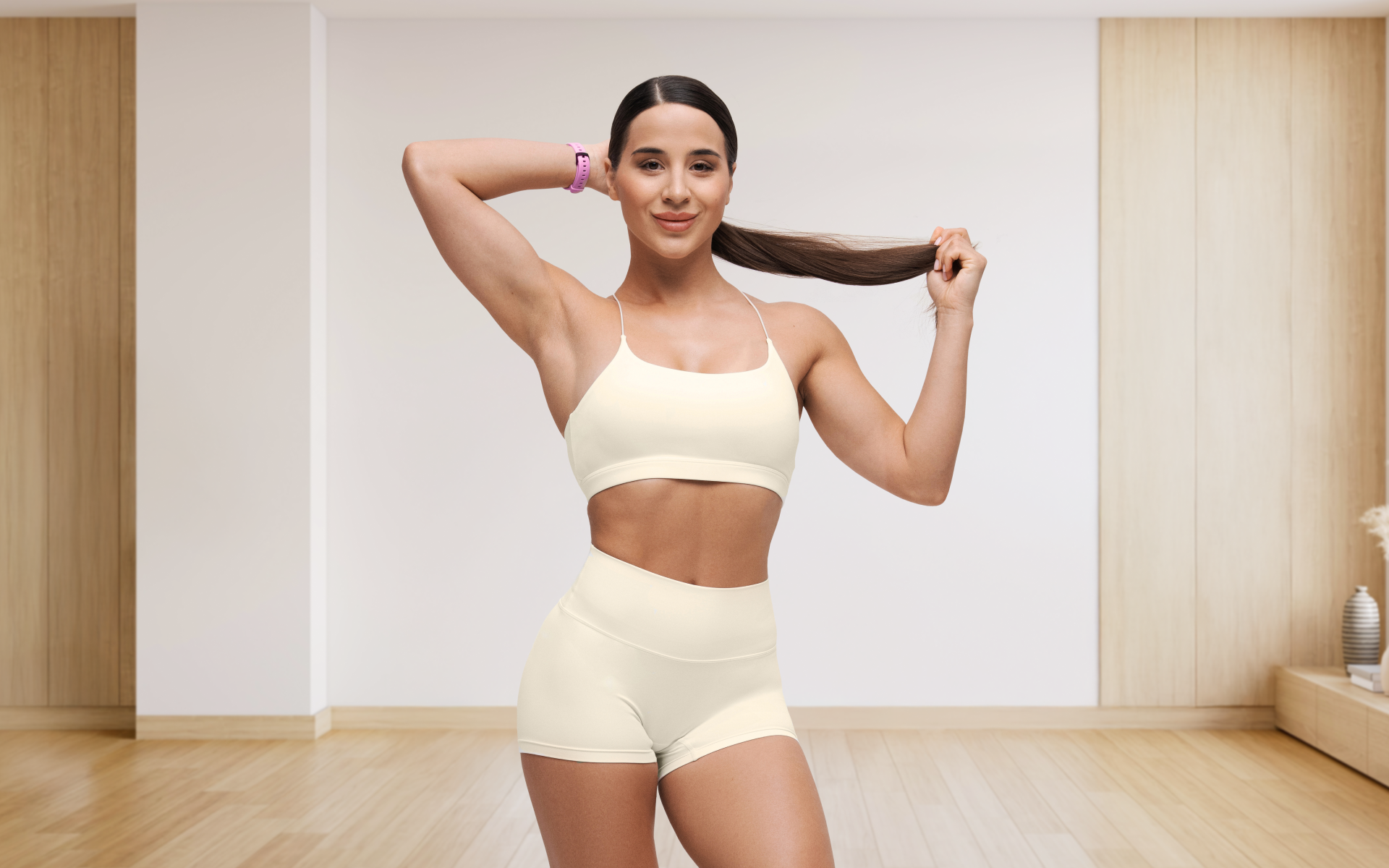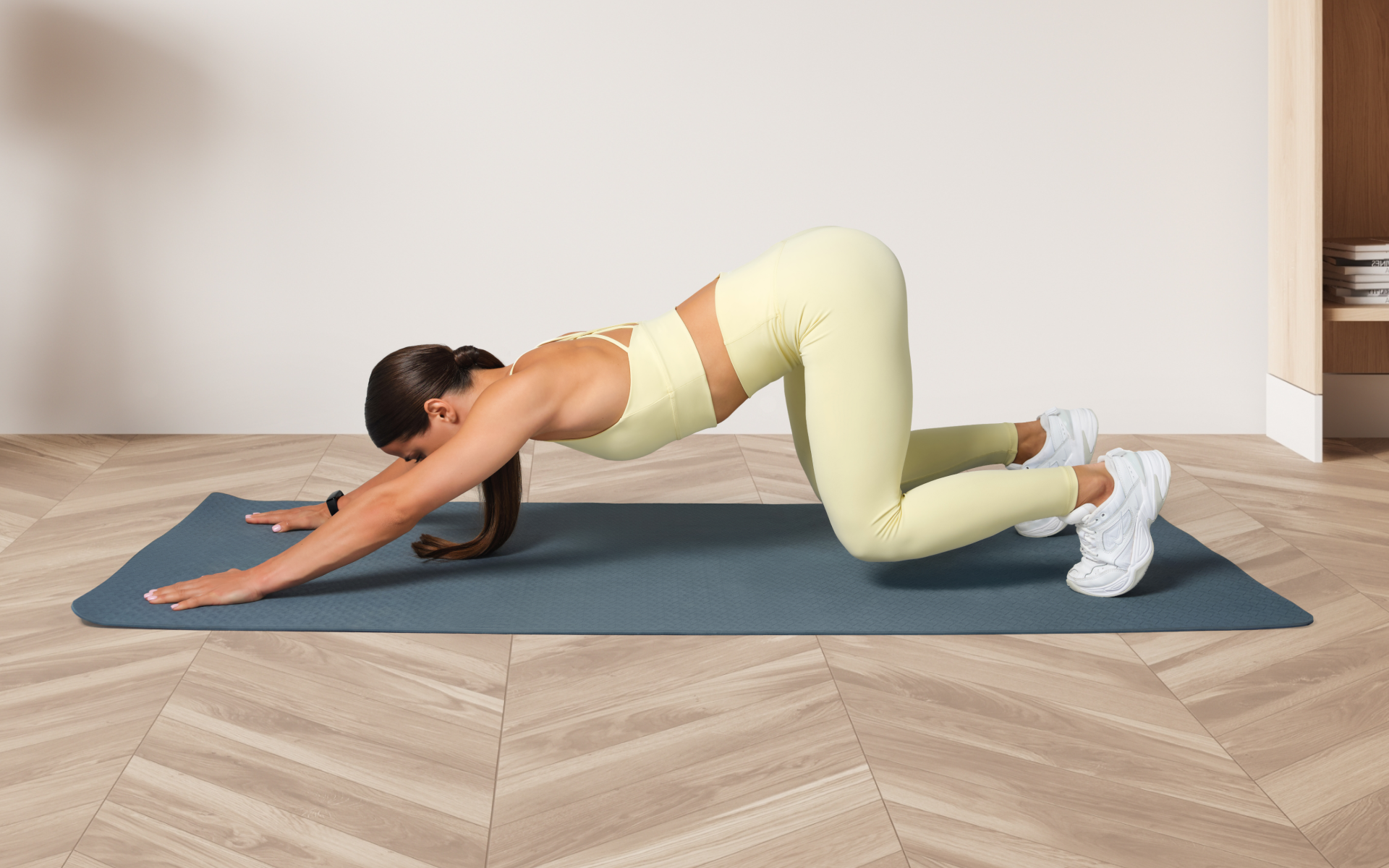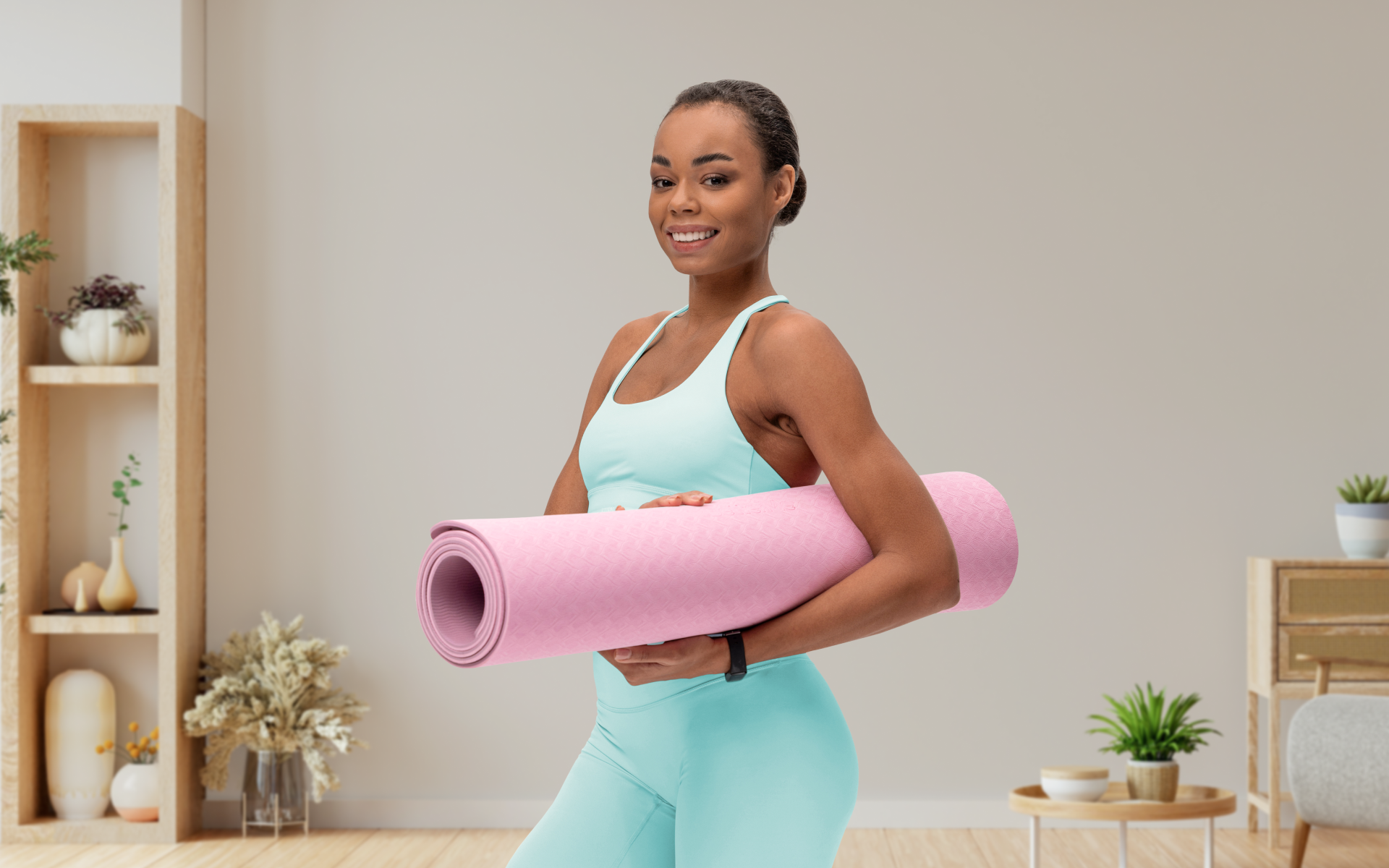Your core serves as the foundation for every movement you make, from lifting groceries to sprinting toward the finish line. However, many people struggle to build genuine core strength, often confusing superficial “six-pack” aesthetics with functional stability. Enter Pilates, a method that has been strengthening cores for nearly a century.
Joseph Pilates, the method’s founder, understood something profound about human movement: true strength comes from the center. His approach to “Contrology” emphasized gaining “mastery of your mind over the complete control of your body”, with the core serving as the powerhouse for all movement.
This comprehensive guide explores how Pilates strengthens your core, which type works best, and provides you with a practical workout plan based on Joseph Pilates’ original exercises.
Does Pilates Build a Strong Core?
Joseph Pilates believed that physical fitness was the first prerequisite to happiness, and he placed the core – what he called the “powerhouse” – at the center of his revolutionary method. His insight was remarkably ahead of its time: the core isn’t just about abdominal muscles, but rather a complex system of deep stabilizers that work together to support your entire body (1).
From a physiological perspective, your core consists of multiple layers of muscles working in harmony. The deepest layer includes the transverse abdominis, which acts like a natural weight belt, and the multifidus, small muscles that stabilize individual vertebrae. The middle layer contains the internal and external obliques, while the superficial layer includes the rectus abdominis – the “six-pack” muscles most people associate with core strength (2).
Pilates takes a unique approach by emphasizing isometric contractions and multi-planar movements that are believed to engage the entire core system (3).
When you perform a Pilates exercise such as the hundred, you’re not just working your abs, you’re training your deep stabilizers to maintain spinal alignment while your limbs move dynamically.
Research supports Joseph Pilates’ intuitive understanding of core function. Studies have shown that Pilates exercises effectively activate the deeper core muscles (4). The deeper core muscles, in particular the transversus abdominus, fire before any movement occurs, which contributes to controlling movement rather than creating it. This muscle may indirectly contribute to injury prevention, but more research is needed. (5).
BetterMe: Health Coaching app helps you achieve your body goals with ease and efficiency by helping to choose proper meal plans and effective workouts. Start using our app and you will see good results in a short time.
The emphasis of this method on breath coordination further enhances core activation. Joseph Pilates insisted that proper breathing was fundamental to his exercises, and modern research has confirmed why: the diaphragm works synergistically with your core muscles. When you coordinate breath with movement, you’re training the entire core system to function as it was designed (6).
What makes Pilates particularly effective for core strength is its focus on eccentric control – the ability to control motion while lengthening. This type of strength training contributes to the kind of functional stability that translates to real-world activities (7), whether you’re lifting a heavy box or maintaining posture during a long workday.
Read more: How to Use the BetterMe Pilates Kit for Active Recovery
Which Type of Pilates Is Best for the Core?
Not all Pilates is created equal when it comes to core strengthening. Understanding the different types can help you choose the most effective approach for your goals and fitness level.
Classical Pilates follows Joseph Pilates’ original method most closely, emphasizing precise technique and the traditional exercise sequence. This approach is particularly effective for core strength as it maintains the integrity of Pilates’ principles: concentration, control, centering, flow, precision, and breathing. The classical method’s structured progression ensures that you build foundational strength before you advance to more challenging movements.
Contemporary Pilates incorporates modern understanding of anatomy and biomechanics while maintaining Pilates’ core principles. This approach often includes modifications and variations that can be particularly beneficial for beginners or those with physical limitations. Contemporary Pilates may use additional props such as foam rollers or resistance bands to enhance core activation.
Reformer Pilates uses a specialized machine with springs and pulleys to provide resistance and assistance. While the reformer can enhance core training through variable resistance, some people argue that the machine’s support can reduce the demand on your deep core muscles compared to mat work.
For pure core strength development, classical mat Pilates offers the most comprehensive approach. The original sequence progresses logically from foundational exercises to advanced movements, ensuring that your core develops both strength and endurance systematically. The lack of external support means your deep stabilizers must work constantly to maintain proper form.
However, the “best” type ultimately depends on your individual needs. Beginners may benefit from contemporary modifications, while those who are looking for maximum core challenge should focus on classical mat exercises. People who are recovering from injury may find reformer work helpful initially before they progress to mat exercises.
The key is consistency and proper technique, regardless of the type you choose. Even basic Pilates exercises performed with precise attention to alignment and breath will build significant core strength over time.
For those who are interested in exploring equipment-based options, you may want to learn more about Pilates reformer core exercises that can complement your mat practice.
What Are the Big 4 Pilates Core Strengthening Exercises?
Joseph Pilates designed his method around fundamental movement patterns that systematically build core strength. Four exercises from his original work stand out as particularly effective for developing the deep stability and control that define functional core strength.
The Hundred
The hundred serves as the foundation of Pilates practice, combining breath control with dynamic core stabilization. This exercise challenges your ability to maintain spinal alignment while your limbs move independently – a crucial skill for athletic performance and daily activities.
Biomechanically, the hundred requires your transverse abdominis and multifidus to work isometrically to prevent your lower back from arching while your hip flexors lift and hold your legs. The arm pumping action adds an element of coordination that challenges your nervous system’s ability to maintain core stability under distraction.
How to Perform the Hundred:
- Lie flat with your entire body resting on the mat. Stretch your arms shoulder-width apart, palms down, straight forward. Stretch your legs close together with your knees locked, straight forward, with your toes pointed forward and downward.
- Inhale slowly and lift both feet about 2 inches above the floor. Raise your head with your eyes focused on your toes, and raise both arms about 6 to 8 inches above your thighs.
- Exhale slowly while raising and lowering both tensed arms from the shoulders only, without touching your body, within a radius of 6 to 8 inches. Mentally count 5 movements while exhaling slowly, then alternate with 5 similar movements while inhaling slowly.
- Begin with only 20 movements and gradually increase in units of 5 additional movements each time until you reach a maximum of 100 movements. Never exceed 100 movements.
- Relax completely when finished.
The Roll Up
The roll up develops spinal articulation and challenges your core’s ability to control flexion against gravity. This exercise builds the kind of functional strength that is needed for getting out of bed or rising from a seated position with control and grace.
Biomechanically, the roll up requires the sequential activation of your core muscles, starting with the deep neck flexors and progressing through each segment of your spine. Your abdominals must work eccentrically to control the descent, building both strength and flexibility simultaneously.
How to Perform the Roll Up:
- Lie flat with your entire body resting on the mat. Stretch your arms shoulder-width apart with your palms up, straight backward. Stretch your legs close together with your knees locked, straight forward, with your toes pointed forward and downward.
- Begin inhaling slowly and bring your arms shoulder-wide straight forward to the upright right angle position while pointing your toes upward.
- While still inhaling slowly, bend your head forward and downward until your chin touches your chest, then begin exhaling slowly and start “rolling” slowly upward and straight forward.
- While exhaling slowly, finish “rolling” forward until your forehead touches your legs, then begin inhaling slowly while returning through the previous positions back to the starting pose.
- Repeat this exercise three times, trying with each repetition to stretch your entire body more and reach farther straight forward.
The Roll-Over with Legs Spread
This advanced exercise develops tremendous core strength by challenging your ability to control your body’s weight as it moves through space. The roll-over builds the kind of power that is needed for explosive athletic movements while maintaining spinal health.
Biomechanically, this exercise requires your core to work dynamically through a large range of motion while supporting the weight of your legs. The spreading action challenges your obliques and hip stabilizers, while the controlled descent builds eccentric strength throughout your entire core system.
How to Perform the Roll-Over with Legs Spread:
- Lie flat on the mat with your arms shoulder-width apart, touching your body with your palms down, stretched straight forward. Stretch your legs close together with your knees locked straight forward, your toes pointed forward and downward.
- Inhale slowly and begin raising your legs upward and over until your toes touch the mat behind your head. Exhale slowly while pressing your arms firmly against the mat and spread your legs as far apart as possible.
- Inhale slowly and begin “rolling” slowly downward with both legs tensed and straight, keeping them spread as far apart as possible until your spine touches the mat. Exhale slowly while returning to the starting position with your legs about 2 inches above the mat.
- Repeat this exercise five times with your legs close together at the start, then five times with your legs spread apart as far as possible at the start.
The One Leg Circle
The one leg circle develops core strength in asymmetrical positions while challenging your ability to maintain pelvic stability. This exercise builds the kind of anti-rotation strength that prevents injury during sports and daily activities.
Biomechanically, this exercise requires your deep core muscles to prevent your pelvis from tilting or rotating while one leg moves in a large circle. Your hip stabilizers must work overtime to maintain proper alignment, while your opposite leg provides a stable base of support.
How to Perform the One Leg Circle:
- Lie flat with your entire body resting on the mat. Stretch your arms shoulder-width apart, touching your body with your palms down, straight forward. Bring your right leg to the upright right-angle position with your toes pointed forward.
- Keep your left leg straight and pressed firmly against the mat while circling your right leg in large, controlled circles. Maintain steady breathing throughout the movement.
- Perform 5 circles in each direction with your right leg, then switch to your left leg and repeat.
- Focus on keeping your pelvis completely still while your leg moves – this is where the core strengthening occurs.
These foundational exercises form the backbone of effective core training. For those who are looking to explore additional options, consider checking out wall Pilates core exercises that can provide similar benefits with different setup requirements.
Read more: Pilates At Home Challenge: A Detailed Guide For Building Core Strength Without Leaving Your Room
What Is a Dynamic Pilates Workout Plan for Core Strength?
Building functional core strength requires a systematic approach that progressively challenges your stabilizing muscles while maintaining proper form. This workout plan uses the four foundational exercises to create a comprehensive core strengthening program that is suitable for people of all fitness levels.
Beginner Level (Weeks 1-4)
Frequency: 3 times per week with at least one day of rest between sessions
Focus: Establishing proper form and building foundational strength
Workout Structure:
- The hundred: 20 pumps (1 set), building to 40 pumps by week 4
- The roll up: 3 repetitions with bent knees if needed
- The one leg circle: 3 circles each direction, each leg, with a bent supporting leg if necessary
- Skip the roll-over initially – add it in week 3 with your legs bent
Progression: Increase the hundred by 10 pumps each week. Add the roll-over in week 3, starting with 3 repetitions and bent legs for safety.
Advanced Variations:
- Perform the hundred with your legs straight at 45 degrees
- Add pulses or holds at challenging positions in the roll up
- Increase the size of circles in the one leg circle, slowing down as you perform each
- Flow between the exercises without rest
Whether you’re a workout beast or just a beginner making your first foray into the world of fitness and dieting – BetterMe has a lot to offer to both newbies and experts! Install the app and experience the versatility first-hand!
Key Programming Principles:
Quality Over Quantity: Never sacrifice form for repetitions. It’s better to perform fewer repetitions with perfect technique than many with poor alignment.
Progressive Overload: Increase difficulty by extending hold times, increasing the range of motion, or adding repetitions rather than rushing to advanced exercises.
Recovery: Allow adequate rest between sessions. Your core muscles need time to adapt and strengthen.
Breath Integration: Never hold your breath during exercises. Proper breathing enhances core activation and prevents unnecessary tension.
Listen to Your Body: Some days you may feel stronger than others. Adjust the workout intensity based on how you feel while maintaining consistency.
This program provides the structure that is needed to build significant core strength systematically. The beauty of Pilates lies in its scalability – even advanced practitioners return to these fundamental exercises regularly as they provide endless opportunities for refinement and challenge.
For those who are looking for additional exercise options, exploring the 4 best core exercises for beginners can complement this Pilates-based program effectively.
How Long Does It Take to Strengthen Your Core?
Core strengthening follows predictable physiological timelines, although individual results vary based on starting fitness level, consistency, and technique quality.
During the first month, your improvements come primarily from neural adaptations rather than actual muscle growth. Your nervous system learns to recruit core muscles more efficiently, which leads to better coordination and control. You’ll likely notice improved stability and easier performance of daily activities (8).
Expected changes:
- Better awareness of core muscles during exercises
- Improved balance and posture
- Reduced lower back discomfort during activities
- Enhanced mind-muscle connection
The next phase (8 weeks in) brings noticeable strength improvements as your muscles start to adapt to the training stimulus. Your deep stabilizers – the transverse abdominis and multifidus – start to develop greater endurance and strength (9).
Expected changes:
- Ability to hold positions longer
- Increased exercise repetitions without fatigue
- Better spinal stability during dynamic movements
- Improved performance in other physical activities
After 3-6 months of consistent training, your core muscles develop significant endurance and start building power. This phase sees the most dramatic improvements in functional strength and athletic performance (9).
Expected changes:
- Sustained core stability during complex movements
- Reduced fatigue during long activities
- Enhanced athletic performance
- Visible improvements in posture and alignment
Core activation in Pilates begins with proper breathing and awareness. Start by lying on your back with your knees bent and your feet flat on the floor. Place one hand on your chest and one on your lower ribs. Breathe naturally and notice how your ribs expand on the inhale and draw together on the exhale. To activate your deep core, exhale and gently draw your lower ribs toward your pelvis while imagining you’re gently hugging your waist with an internal corset. This subtle engagement should feel like a gentle drawing inward and upward, not a harsh clenching. You should still be able to breathe normally while maintaining this activation. Practice this breathing pattern during all Pilates exercises. Your core should engage automatically on the exhale and maintain gentle activation throughout each movement. The key is to find the balance between engagement and relaxation – your core should work without creating tension in your neck, shoulders, or jaw. Muscle soreness after Pilates is normal, particularly when you’re new to the practice or returning after a break. Pilates challenges muscles in ways they’re not used to working, particularly the deep stabilizers that often remain dormant in daily life. However, sharp pain or severe discomfort isn’t normal and may indicate several issues. You may be overengaging your core muscles, creating tension rather than controlled strength. Many beginners mistake gripping and clenching for proper core activation, which can lead to excessive soreness and potential strain. Another common cause is attempting exercises that are beyond your current ability level. Start with basic movements and progress gradually. Your core muscles need time to adapt to the unique demands of Pilates. If soreness persists beyond 48 hours or includes sharp, shooting pains, consult a healthcare provider or certified Pilates instructor to assess your technique and rule out injury. Pilates can absolutely replace traditional ab workouts for most people’s fitness goals. In fact, Pilates often provides superior results as it targets the entire core system rather than focusing on the superficial abdominal muscles. Traditional ab workouts typically focus on the rectus abdominis through repetitive flexion movements such as crunches and sit-ups. While these exercises have their place, they don’t directly address the deep stabilizing muscles that provide functional strength and spinal protection. Pilates exercises work your core three-dimensionally, challenging stability, strength, and coordination simultaneously. This approach builds the kind of functional core strength that translates to more resilience, reduced back pain, and enhanced athletic performance. For those who are looking for visible abdominal definition, Pilates combined with appropriate nutrition will achieve better results than traditional ab workouts alone, as the method builds both strength and length in your core muscles, which creates a more balanced and aesthetically pleasing appearance. Both yoga and Pilates can build core strength, but Pilates typically provides more targeted and systematic core development. Pilates was specifically designed with core strength as a primary focus, which makes it more efficient for this particular goal. Pilates exercises systematically progress from basic to advanced movements, with each exercise specifically designed to challenge your core stability and strength. The emphasis of the method on precise technique and controlled movement creates consistent overload on your core muscles. Yoga certainly engages core muscles, particularly in poses such as plank, boat pose, and arm balances. However, yoga’s primary goals extend beyond core strength to include flexibility, spiritual practice, and overall wellness. Core engagement in yoga often serves as support for other poses rather than the primary training objective. For pure core strengthening efficiency, Pilates wins. However, yoga offers benefits such as improved flexibility and stress reduction that complement core training beautifully. Many practitioners find combining both modalities provides the most comprehensive approach to fitness and well-being. The best choice will depend on your goals, preferences, and lifestyle. If core strength is your primary objective, start with Pilates and add yoga for its additional benefits.Frequently Asked Questions
How do you activate your core in Pilates?
Why does my core hurt so bad after Pilates?
Can Pilates replace ab workouts?
Is yoga or Pilates better for core strength?
[video-shortcode link=”https://quiz.betterme.world/first-page-generated?flow=2117&utm_source=Blog&utm_medium=Blog&utm_campaign=Is_Pilates_Good_For_Core_Strength” mp4=”https://cdn.betterme.world/articles/wp-content/uploads/2025/05/PilatesOlesia1.mp4″]
The Bottom Line
The evidence is clear: Pilates offers one of the most effective, systematic approaches to building functional core strength available today. Unlike quick-fix ab routines that only target surface muscles, Pilates develops the deep stabilizing system that truly supports your spine and enhances every movement you make.
Joseph Pilates understood something fundamental about human movement: true strength comes from the center. His method builds not just strong abs, but a coordinated system of muscles that work together to create stability, power, and grace.
The four foundational exercises outlined in this guide – the hundred, the roll up, the roll-over, and the one leg circle – provide everything you need to start building exceptional core strength. Start with the beginner program, focus on perfect technique over intensity, and trust the process. Your body will adapt, strengthen, and transform with consistent practice.
DISCLAIMER:
This article is intended for general informational purposes only and does not serve to address individual circumstances. It is not a substitute for professional advice or help and should not be relied on for making any kind of decision-making. Any action taken as a direct or indirect result of the information in this article is entirely at your own risk and is your sole responsibility.
BetterMe, its content staff, and its medical advisors accept no responsibility for inaccuracies, errors, misstatements, inconsistencies, or omissions and specifically disclaim any liability, loss or risk, personal, professional or otherwise, which may be incurred as a consequence, directly or indirectly, of the use and/or application of any content.
You should always seek the advice of your physician or other qualified health provider with any questions you may have regarding a medical condition or your specific situation. Never disregard professional medical advice or delay seeking it because of BetterMe content. If you suspect or think you may have a medical emergency, call your doctor.
SOURCES:
- PILATES’ Return to Life Through Contrology (n.d., books.out.csli.me)
- Muscles of the Abdomen (n.d., teachmeanatomy.info)
- Electromyographic evaluation of trunk core muscles during Pilates exercise on different supporting bases (2019, sciencedirect.com)
- The Relationship of Trunk Muscle Activation and Core Stability: A Biomechanical Analysis of Pilates-Based Stabilization Exercise (2021, mdpi.com)
- Activity of the transverse abdominis muscle and its role in lower trunk stability and injury prevention in strength training men and football players (2025, researchgate.net)
- The impact of core training combined with breathing exercises on individuals with chronic non-specific low back pain (2025, frontiersin.org)
- The Health and Functional Benefits of Eccentric versus Concentric Exercise Training: A Systematic Review and Meta-Analysis (2023, pmc.ncbi.nlm.nih.gov)
- Exercise Physiology (2024, ncbi.nlm.nih.gov)
- Comparisons of functional movements and core muscle activity in women according to Pilates proficiency (2024, frontiersin.org)
